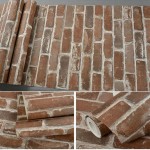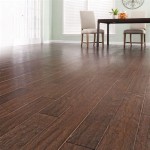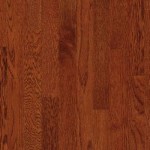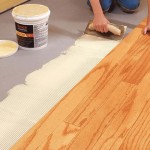Cost To Install Laminate Flooring Home
Laminate flooring has become a prevalent choice for homeowners seeking an affordable and durable alternative to hardwood. Its versatility, ease of installation, and relatively low maintenance requirements contribute to its popularity. Understanding the costs associated with laminate flooring installation is crucial for budgeting and planning home improvement projects. This article delves into the various factors influencing the overall cost, providing a comprehensive overview for homeowners considering this flooring option.
The total cost of installing laminate flooring encompasses materials, labor, and any ancillary expenses, such as subfloor preparation or the removal of existing flooring. Each element contributes to the final price, and variations in these factors can significantly impact the overall investment.
Material Costs: Laminate Flooring and Underlayment
The primary material cost is the laminate flooring itself. Laminate is typically priced per square foot, and the price can fluctuate based on the quality, thickness, brand, and style of the product. Thicker laminates, often offering greater durability and better sound insulation, tend to be more expensive. Similarly, laminates that mimic exotic hardwood species or feature intricate textures will generally command a higher price point. Laminate flooring ranges in price from approximately $1 to $5 per square foot, depending on the aforementioned characteristics.
Underlayment is another essential material that significantly influences the overall cost. Underlayment is a thin layer of material installed between the subfloor and the laminate flooring. Its primary functions include providing a smooth surface for the laminate, cushioning the flooring, reducing noise transmission, and acting as a moisture barrier. While some laminate flooring products come with pre-attached underlayment, often denoted as “attached pad,” separate underlayment is often preferred or even required, especially for areas prone to moisture or heavy foot traffic.
The cost of underlayment can range from $0.30 to $1.00 or more per square foot, depending on the type and quality. Basic foam underlayment is the most affordable option, while more advanced options like cork or rubber underlayment offer superior sound insulation and moisture protection, but at a higher price. The selection of underlayment should be carefully considered based on the existing subfloor condition, the intended use of the room, and the desired level of sound and moisture protection.
Additional material costs may include transition strips, which are used to seamlessly connect the laminate flooring to other flooring types or to bridge gaps between rooms. Quarter-round molding or baseboards are also often required to conceal the expansion gap around the perimeter of the room, ensuring proper installation allowing for the natural expansion and contraction of the laminate. These finishing materials typically cost between $1 and $3 per linear foot, depending on the material and style chosen.
Labor Costs: Professional Installation Versus DIY
Labor costs represent a substantial portion of the overall expense of laminate flooring installation. Hiring a professional installer ensures a proper and efficient installation, minimizing the risk of errors that could lead to problems down the line, such as buckling, warping, or uneven surfaces. However, professional installation comes at a price.
Professional installation costs typically range from $2 to $5 per square foot, depending on the complexity of the project, the location, and the installer’s experience. Factors that can increase labor costs include: the size of the area to be covered, the shape of the room (complex layouts require more cutting and fitting), the condition of the subfloor (requiring additional preparation), and the need to move furniture or remove existing flooring.
For homeowners comfortable with DIY projects, installing laminate flooring can be a cost-effective alternative. Laminate flooring is designed for relatively easy installation through a click-lock system, where the planks simply snap together. While a DIY approach can save on labor costs, it requires careful planning, accurate measurements, and the proper tools. Improper installation can lead to a variety of problems that may ultimately require professional intervention, potentially negating any initial cost savings.
Before embarking on a DIY project, it's crucial to assess one's skill level and the complexity of the project. It's also important to factor in the time commitment required for installation. A small room with a simple layout may be a manageable DIY project, while a large, complex room with an uneven subfloor might be better left to professionals.
Additional Costs: Subfloor Preparation, Removal, and Disposal
Beyond the core materials and labor, several additional costs can contribute to the overall expense of laminate flooring installation. These costs often relate to preparing the existing space for the new flooring and can significantly impact the final budget.
Subfloor preparation is a critical step in ensuring a successful laminate flooring installation. If the existing subfloor is uneven, damaged, or contaminated, it must be properly prepared before the laminate can be installed. This may involve patching holes, leveling uneven areas with self-leveling compound, or sanding down high spots. Subfloor preparation can add $0.50 to $3.00 or more per square foot, depending on the extent of the work required. In severe cases, the existing subfloor may need to be replaced entirely, which can significantly increase the overall cost.
Removing and disposing of existing flooring is another potential cost factor. If the existing flooring is carpet, vinyl, or tile, it must be removed before the laminate can be installed. This can be a labor-intensive process, particularly with glued-down flooring. Removal costs typically range from $1 to $3 per square foot, depending on the type of flooring and the difficulty of removal. Disposal fees may also apply, depending on local regulations and the amount of material being discarded.
Moving furniture and appliances out of the room before installation is another consideration. While some homeowners may be able to handle this task themselves, others may require professional movers, which will incur additional costs. Similarly, if electrical outlets or door frames need to be adjusted to accommodate the new flooring height, this will add to the overall expense. Finally, it's always prudent to factor in a contingency fund for unexpected problems that may arise during the installation process. This could include hidden damage to the subfloor or unforeseen complications during removal of existing flooring.
In summary, the cost of installing laminate flooring is influenced by a multitude of factors, ranging from the quality and type of materials chosen to the complexity of the installation process and the condition of the existing subfloor. Careful consideration of these factors is essential for accurate budgeting and for ensuring a successful and cost-effective flooring project. Obtaining multiple quotes from reputable installers and comparing material prices can also help homeowners make informed decisions and optimize their investment.

Cost To Install Laminate Floors The Home Depot

Cost To Install Laminate Flooring In 2024 Forbes Home

How Much Does Laminate Flooring Installation Cost 2024

Laminate Flooring Installation 2024 Cost Guide Modernize

How Much Does Flooring Installation Cost 2024 Guide

How Much Does Flooring Installation Cost In 2024 Forbes Home

How Much Should Laminate Flooring Fitting Cost In 2024 Checkatrade

How Much Does Laminate Flooring Cost In 2024 Mybuilder

Laminate Flooring Installation 2024 Cost Guide Modernize

Cost To Install Vinyl Plank Flooring A Complete Guide For 2024 Forbes Home








